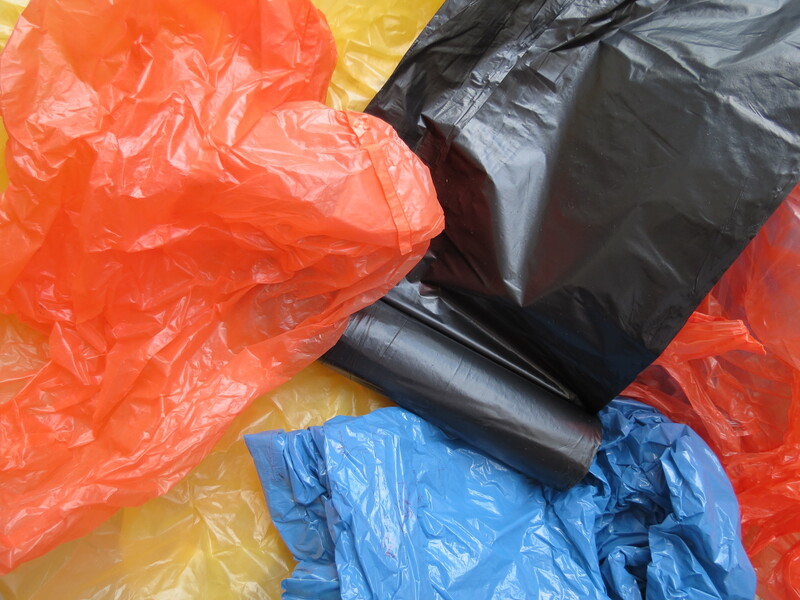Safeguarding Your Sound: Professional vs. DIY Piano Moving
Posted on 11/06/2025
Safeguarding Your Sound: Professional vs. DIY Piano Moving
Pianos are more than just instruments; they are cherished family heirlooms, precision-crafted pieces of art, and substantial investments deserving the utmost care. Whether you are an avid pianist or an occasional player, ensuring your cherished piano remains safe during a move is paramount. In this comprehensive guide, we dive deep into professional vs. DIY piano moving, emphasizing the best strategies for safeguarding your prized sound.

Understanding the Complexity: Why Moving a Piano Is Not Like Moving Furniture
Unlike general furniture, pianos consist of thousands of intricate parts, including tensioned strings, delicate hammers, and sensitive keys--all protected by a heavy, often awkwardly shaped casing. Piano moving presents unique challenges due to these factors:
- Weight and Bulk: Upright pianos can weigh 300-500 pounds, while grand pianos can exceed 1,200 pounds.
- Delicate Mechanisms: The internal mechanics are extremely sensitive to tilting, bumping, and temperature shifts.
- Awkward Shape: The uneven weight distribution and size make handling difficult without experience.
- Risk of Damage: Both instrument and property can be damaged if not handled correctly.
With so much at stake, safeguarding your sound means understanding your options for moving the instrument and the risks involved.
The Case for Professional Piano Moving
Why Consider Professional Piano Movers?
Hiring professional piano movers comes with multiple benefits that go far beyond manpower. Here's why opting for experts is often the recommended path:
- Experience: Specialized movers have the training and expertise to handle various piano types, from compact uprights to concert grands.
- Right Equipment: Movers use purpose-built dollies, handcrafted ramps, locking straps, and protective padding, reducing the risk of accidents and damage.
- Protection: Professionals carry liability insurance that covers accidental damage to the piano and property.
- Custom Solutions: Each move is tailored, addressing narrow halls, stairs, or tricky doorways.
- Safety: Lifting and maneuvering a heavy object like a piano can cause serious injury without proper training.
What to Expect From a Professional Piano Moving Service
When you hire a reputable piano moving company, you are essentially entrusting your valuable instrument to seasoned hands. A typical service includes:
- Assessment: Movers examine all access points and the piano itself, planning the best route.
- Disassembly: In some cases, legs, pedals, or the lid may be removed for safe transport.
- Packing and Wrapping: Custom-fitted padding and shrink wrap protect surfaces from scratches, dings, and temperature variation.
- Loading: Heavy-duty dollies and ramps safely load your piano onto a specialized vehicle equipped with climate control and securement anchors.
- Transport: Careful driving and secure placement minimize shocks and jolts.
- Reassembly and Placement: At the destination, movers set up your piano, ensuring it's level and placed precisely as requested.
This meticulous process is designed to protect your piano, your property, and your peace of mind.
The DIY Route: Is Moving Your Piano Yourself Worth the Risk?
Why Some Choose DIY Piano Moving
Many homeowners weigh the option of moving their own piano to save money or because professionals are unavailable locally. The DIY approach can be viable for small upright pianos, short distances, or with access to several strong, careful helpers. However, the risks often outweigh the cost savings.
Risks of DIY Piano Moving
- Injury: Pianos are heavy, slippery, and awkward. Lifting without training leads to back injuries, pinched fingers, or worse.
- Property Damage: Doors, walls, stairs, and flooring are easily scratched, dented, or cracked.
- Piano Damage: Most significantly, improper moving can result in:
- Tuned strings snapping
- Legs breaking
- Soundboard cracks (irreparable and devastating to the instrument's sound)
- Damaged keys or action mechanisms
- Finish scratches and chips
- No Insurance: Standard homeowners insurance and truck rental policies typically do not cover damage during transit.
- Emotional Cost: The regret of damaging a family treasure can outweigh any financial savings.
If You Still Decide To Move Your Own Piano
If you are determined to try DIY piano moving, careful planning, preparation, and adequate help are vital. Here is a basic outline for those willing to take the risk:
- Gather Tools: Heavy-duty moving straps, piano board or skid, strong piano dollies, plenty of padding, moving blankets, and non-slip gloves.
- Team Up: Recruit at least 3-5 strong, trusted helpers.
- Protect Your Piano: Pad the instrument fully; avoid letting straps touch delicate keys or legs directly.
- Clear the Route: Plan your path in advance; remove rugs, doors, and sharp corners.
- Lift Properly: Use bent knees, lift straight up, avoid sudden shifts or tilting.
- Secure for Transit: Lock the keyboard cover, cinch belts snugly, and secure the piano upright against an inside wall of the moving vehicle.
- Drive Slowly: Brake gently, avoid sharp turns, and cushion the piano on all sides with padding.
- Retune: Plan to have your piano retuned and checked by a technician after the move.
Even with these precautions, always be aware of the serious risks involved.
Key Differences: Professional vs. DIY Piano Moving
Understanding the differences between professional and DIY piano moving can help you make an informed choice:
| Factor | Professional Movers | DIY Move |
|---|---|---|
| Cost | Greater initial expense, typically $300-$1,000+ | Lower upfront, but risk of much higher costs from damage or injury |
| Experience | Years of specialized piano handling | Often zero or limited firsthand experience |
| Equipment | Professional-grade tools, customized trucks, ample padding | Rental equipment may not be adequate; improvising carries risk |
| Insurance | Usually includes coverage for instrument & property | Most truck rentals & home insurance don't cover piano damage |
| Peace of Mind | Less stress, less risk | High stress, high risk |
| Time | Quick, efficient, professional process | Takes much longer due to inexperience |
| Safety | Proper lifting and transport techniques reduce chance of injury | High risk of injury to DIY movers |
Expert Tips for Safeguarding Your Sound During a Move
Before the Move:
- Consult a Professional: Even if you plan a DIY move, call a professional piano mover for advice and an estimate.
- Photograph and Document: Take detailed photos and notes of the piano and its serial number for insurance purposes.
- Check for Loose Parts: Secure or remove music stands, pedals, and other detachable accessories.
- Measure All Openings: Ensure the piano will fit through every passage and elevator en route. Consider any 90-degree turns or staircases.
- Check Weather Conditions: Plan your move for a day with mild temperatures and no precipitation if possible.
During the Move:
- Keep It Level: Avoid tilting pianos to extremes. Never set a grand piano on its side unless specifically instructed by a mover.
- Communicate: Assign one leader to call-out and coordinate all movements, especially when navigating stairs or tight spaces.
- Move Slowly: Rushing increases the chance of slips and impacts.
- Monitor Stress Points: Pay attention to fragile legs and pedals, which are susceptible to breakage.
After the Move:
- Position Carefully: Place the piano away from direct sunlight, radiators, or exterior walls to prevent damage from temperature and humidity fluctuations.
- Schedule a Tuning: A move often detunes a piano; schedule a professional technician to tune and inspect it in your new location.
- Check for Damage: Immediately inspect the instrument and document any issues for possible insurance claims.
Protecting Your Invested Sound: Insurance, Value, and Peace of Mind
If your piano is an antique, a rare brand, or holds high sentimental value, it is worth considering additional moving insurance beyond what a professional service may provide. This is especially important for grand and baby grand pianos, which not only represent a larger financial investment but possess unique, irreplaceable sound quality.
Evaluating Moving Insurance Options
- Check Standard Coverage: Ask the moving company what damages are covered and up to what amount.
- Request a Rider: For highly valuable instruments, request an additional insurance policy rider from your provider.
- Appraisal: Consider a professional appraisal before the move for accurate valuation in case of a claim.
Valuing Peace of Mind
- Your instrument is safe in expert hands
- Your home and property are protected during the move
- You reduce risk of expensive, sometimes irreparable, damage
Sustain Your Sound For Years to Come: Maintenance After the Move
After your piano arrives at its new home, a few extra steps will ensure it continues to sound and look its best:
- Tuning and Regulation: Moving the piano disturbs the delicate balance of strings and the soundboard. Schedule a technician for a post-move tuning and check-up within 2-4 weeks.
- Climate Control: Maintain stable humidity and temperature to prevent warping, cracking, or ungluing of wooden parts and felt.
- Routine Cleaning: Use a soft, dry microfiber cloth; never use household solvents on the finish or keys.
- Play Often: Regular playing not only maintains your musical skills but keeps the action responsive and the soundboard exercised.

Frequently Asked Questions About Piano Moving
Can I move a piano by myself?
While possible, especially for small upright pianos over short distances, moving a piano by yourself is extremely risky and not recommended due to the potential for injury and costly damage.
How much does professional piano moving cost?
The price depends on the piano type, move distance, obstacles like stairs, and required services. Expect to pay anywhere from $300 to $1,200. Additional charges may apply for difficult moves or special crating.
How do I find a reputable piano mover?
Search for specialists with strong reviews, proper licensing, and insurance. Ask for references and details about their process. Always get a written estimate and inquire about coverage for damages.
What do I do if my piano is damaged during a move?
Document everything with photos, keep all receipts, and notify the moving company and your insurance immediately. Consult a certified piano technician to evaluate the extent of the damage.
Conclusion: Making the Best Decision to Safeguard Your Sound
Your piano is more than just an object--it's a source of music, memories, and artistry. Whether you choose a professional piano moving service or attempt a DIY piano move, the primary goal should always be safeguarding your sound and preserving both the instrument's beauty and function. While professional movers require a greater financial investment, their expertise, equipment, and insurance offer invaluable peace of mind, often saving you far more in potential repairs and regrets.
When it comes to professional vs. DIY piano moving, the safest bet is clear: trust your priceless sound to those with the training and tools to deliver it safely. Protect your piano--and your music--for future generations to enjoy.
